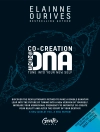Presents a unique approach to grasping the concepts of quantum theory with a focus on atoms, clusters, and crystals
Quantum theory of atoms and molecules is vitally important in molecular physics, materials science, nanoscience, solid state physics and many related fields. Introductory Quantum Mechanics with MATLAB is designed to be an accessible guide to quantum theory and its applications. The textbook uses the popular MATLAB programming language for the analytical and numerical solution of quantum mechanical problems, with a particular focus on clusters and assemblies of atoms.
The textbook is written by a noted researcher and expert on the topic who introduces density functional theory, variational calculus and other practice-proven methods for the solution of quantum-mechanical problems. This important guide:
-Presents the material in a didactical manner to help students grasp the concepts and applications of quantum theory
-Covers a wealth of cutting-edge topics such as clusters, nanocrystals, transitions and organic molecules
-Offers MATLAB codes to solve real-life quantum mechanical problems
Written for master’s and Ph D students in physics, chemistry, material science, and engineering sciences, Introductory Quantum Mechanics with MATLAB contains an accessible approach to understanding the concepts of quantum theory applied to atoms, clusters, and crystals.
قائمة المحتويات
Preface xi
1 Introduction 1
1.1 Different Is Usually Controversial 1
1.2 The Plan: Addressing Dirac’s Challenge 2
Reference 4
2 The Hydrogen Atom 5
2.1 The Bohr Model 5
2.2 The Schrödinger Equation 8
2.3 The Electronic Structure of Atoms and the Periodic Table 15
References 18
3 Many-electron Atoms 19
3.1 The Variational Principle 19
3.1.1 Estimating the Energy of a Helium Atom 21
3.2 The Hartree Approximation 22
3.3 The Hartree–Fock Approximation 25
References 27
4 The Free Electron Gas 29
4.1 Free Electrons 29
4.2 Hartree–Fock Exchange in a Free Electron Gas 35
References 36
5 Density Functional Theory 37
5.1 Thomas–Fermi Theory 37
5.2 The Kohn–Sham Equation 40
References 43
6 Pseudopotential Theory 45
6.1 The Pseudopotential Approximation 45
6.1.1 Phillips–Kleinman Cancellation Theorem 47
6.2 Pseudopotentials Within Density Functional Theory 50
References 57
7 Methods for Atoms 59
7.1 The Variational Approach 59
7.1.1 Estimating the Energy of the Helium Atom. 59
7.2 Direct Integration 63
7.2.1 Many-electron Atoms Using Density Functional Theory 67
References 69
8 Methods for Molecules, Clusters, and Nanocrystals 71
8.1 The H2 Molecule: Heitler–London Theory 71
8.2 General Basis 76
8.2.1 Plane Wave Basis 79
8.2.2 Plane Waves Applied to Localized Systems 87
8.3 Solving the Eigenvalue Problem 89
8.3.1 An Example Using the Power Method 92
References 95
9 Engineering Quantum Mechanics 97
9.1 Computational Considerations 97
9.2 Finite Difference Methods 99
9.2.1 Special Diagonalization Methods: Subspace Filtering 101
References 104
10 Atoms 107
10.1 Energy levels 107
10.2 Ionization Energies 108
10.3 Hund’s Rules 110
10.4 Excited State Energies and Optical Absorption 113
10.5 Polarizability 122
References 124
11 Molecules 125
11.1 Interacting Atoms 125
11.2 Molecular Orbitals: Simplified 125
11.3 Molecular Orbitals: Not Simplified 130
11.4 Total Energy of a Molecule from the Kohn–Sham Equations 132
11.5 Optical Excitations 137
11.5.1 Time-dependent Density Functional Theory 138
11.6 Polarizability 140
11.7 The Vibrational Stark Effect in Molecules 140
References 150
12 Atomic Clusters 153
12.1 Defining a Cluster 153
12.2 The Structure of a Cluster 154
12.2.1 Using Simulated Annealing for Structural Properties 155
12.2.2 Genetic Algorithms 159
12.2.3 Other Methods for Determining Structural Properties 162
12.3 Electronic Properties of a Cluster 164
12.3.1 The Electronic Polarizability of Clusters 164
12.3.2 The Optical Properties of Clusters 166
12.4 The Role of Temperature on Excited-state Properties 167
12.4.1 Magnetic Clusters of Iron 169
References 174
13 Nanocrystals 177
13.1 Semiconductor Nanocrystals: Silicon 179
13.1.1 Intrinsic Properties 179
13.1.1.1 Electronic Properties 179
13.1.1.2 Effective Mass Theory 184
13.1.1.3 Vibrational Properties 187
13.1.1.4 Example of Vibrational Modes for Si Nanocrystals 188
13.1.2 Extrinsic Properties of Silicon Nanocrystals 190
13.1.2.1 Example of Phosphorus-Doped Silicon Nanocrystals 191
References 197
A Units 199
B A Working Electronic Structure Code 203
References 206
Index 207
عن المؤلف
James Chelikowsky, Ph D, holds the W.A. ‘Tex’ Moncrief Chair at the University of Texas at Austin. He is a professor in the departments of physics, chemistry and chemical engineering. He also serves as the Director for the Center of Computational Materials in the Institute for Computational Engineering and Sciences.












